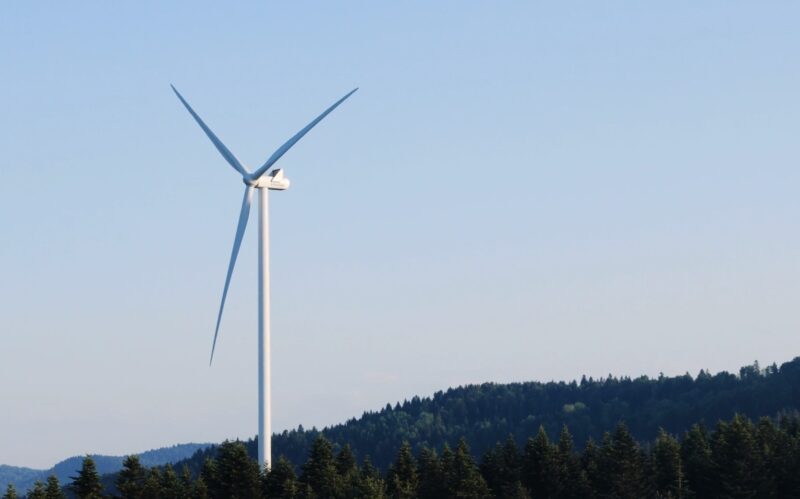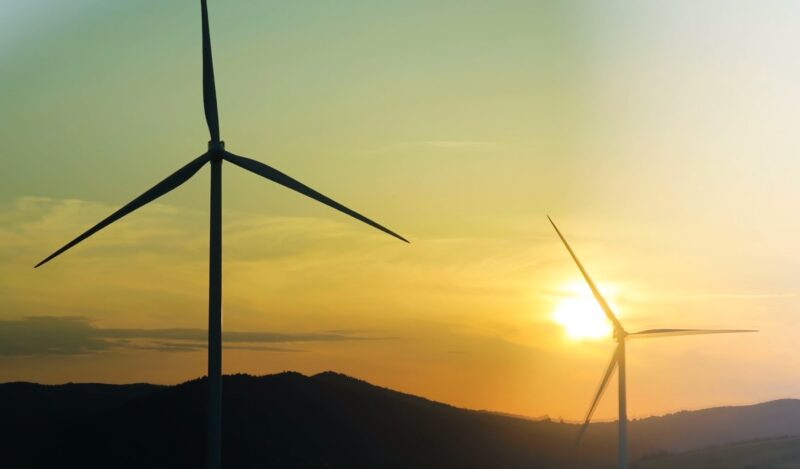Wind power is the world’s fastest growing electricity generation technology. Wind is a renewable resource because it is inexhaustible. It is a result of the sun shining unevenly on the earth. The corresponding daily and seasonal changes in temperature consistently generate wind, producing a fuel source that can never be depleted.
State-of-the-art wind power plants use large spinning blades to capture the kinetic energy in moving wind, which then is transferred to rotors that produce electricity. At the best wind fuel sites, wind plants today are nearly competitive with the conventional natural gas-fired combined-cycle plants — even when natural gas prices have recently been at historically low levels.
Regions where average wind speeds exceed 12 miles per hour are currently the best wind power plant sites. Current costs of wind-generated electricity at prime sites approach the costs of a new coal-fired power plant.
Wind power is the lowest-cost renewable energy technology available on the market today. According to the Department of Energy, the costs of wind power are projected to continue to fall and may rank the cheapest electricity source of all options. With that in mind, conserving energy will not be a problem in the future.
What Are the Environmental Impacts?

Wind plants produce no air pollution. They use no water, and there is no need to tear up the land to extract the wind resource that produces wind power. Nonetheless, there may be environmental problems associated with some wind plants. Wind power generates three categories of environmental impacts: visual impacts; noise pollution; wildlife impacts. These impacts can vary immensely from site to site.
- Because wind farms are comprised of large numbers of turbines each mounted atop tall towers in rural areas, they can often be seen for a long distance. Whether this visual impact is good or bad will vary from location to location. Some find wind turbines to be enduring symbols of self-sufficiency. Others see them as stark intrusions in the “natural” landscape.
- Wind turbines, particularly older designs, emit noise that can be heard in the vicinity of the wind farms. The level of noise produced by one wind turbine is equivalent to that of your washing machine. The frequency and volume of this noise can be controlled but not eliminated by wind turbine design.
- In the early 1980s, three major wind farms were built in passes in California. At the Altamont Pass site, deaths of birds, particularly raptors, prompted a number of studies that subsequently influenced both the design of newer wind turbines and the siting of wind farms. It was discovered that raptors perch atop the wind generators for a better view while hunting, and upon rare occasion get caught in the spinning blades when the wind begins to blow. Current wind turbine technology offers solid tubular towers to prevent birds from perching on them. Turbine blades also rotate more slowly than those of earlier designs, reducing potential for collisions with birds.
If wind power plants are sited in regions screened for sensitive local bird populations, the environmental footprint of wind-generated electricity is quite small when compared to the wildlife and ecosystem impacts of fossil fuel mining and fuel combustion. The manufacture of wind generation technology creates some air emissions.

